This Tiny Caribbean Island Was Beloved by ’80s Musicians. Now It’s Ready for a Comeback.
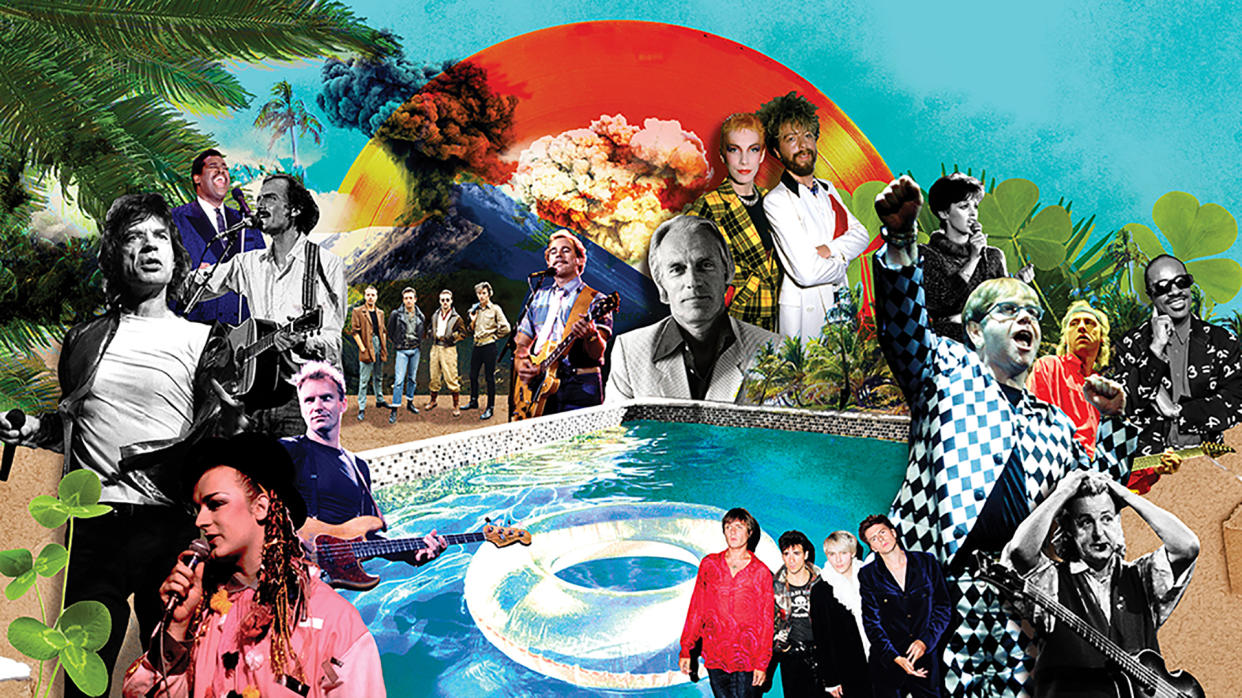
- Oops!Something went wrong.Please try again later.
- Oops!Something went wrong.Please try again later.
- Oops!Something went wrong.Please try again later.
- Oops!Something went wrong.Please try again later.
- Oops!Something went wrong.Please try again later.
The Caribbean island of Montserrat was a jet set getaway in the 1980s after music producer (and so-called ‘fifth Beatle’) Sir George Martin opened a recording studio there, AIR. The appeal of working with his team—and spending a few weeks or even months recording in a tropical paradise, too—was so compelling that the world’s most famous rockstars flocked there: Mick Jagger, Elton John, Stevie Wonder and Paul McCartney all laid down tracks in Montserrat. The party ended abruptly when twin disasters struck the island, catastrophes from which it’s only just starting to recover. More than 25 years later, though, Montserrat is ready for a comeback.
Ebony and Ivory, Paul McCartney and Stevie Wonder Tug of War (1982)
When one of the Beatles arrived on the Caribbean island of Montserrat in 1981, he was mindful of security. Obviously—he was a Beatle. “Paul McCartney had bodyguards with cutlasses,” recalls local Cecil Wade, who now works as a guide and driver. “But he ended up giving them the money to go off somewhere else and just said, ‘Go ahead, enjoy yourselves.’ ” McCartney himself clearly planned to do much the same, installing his young family in a villa for several months while he worked; old pal Ringo Starr dropped in, making cameos in the home movies McCartney’s entourage shot then. His family, including daughter Stella, barely 10 then, frolic by the pool playing ping-pong, lark around on the balcony that overhangs it and sit on the top of a cliff amid a lush onetime plantation.
More from Robb Report
Maluma on Building His Porsche Collection, Buying Rolexes and Sage Advice from J.Lo
This New Turks & Caicos Resort Has the Island Nation's First Manmade Lagoon
The First Exhibition Exploring Basquiat's Relationship With Music Opens Next Month
The current owner of that villa, Providence Estate House, proudly points to one corner of the living room, which he has painstakingly renovated. Tony Glaser, an expat Briton who used to teach at the local university, notes there was once a piano where the bookcase sits. He indicates a framed color photograph hanging on a nearby wall: McCartney and Stevie Wonder at that keyboard on the momentous visit when they recorded “Ebony and Ivory.”
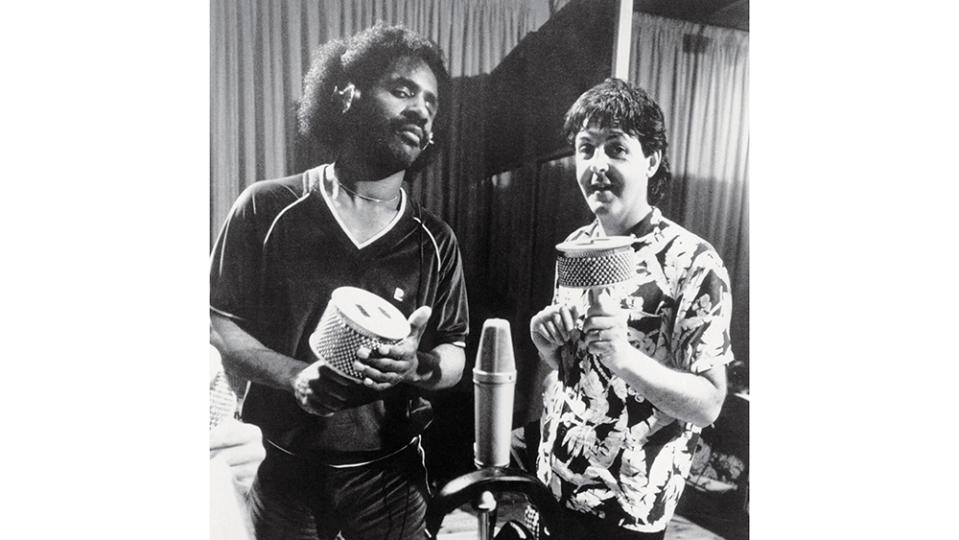
Stevie Wonder and Paul McCartney recording ”Ebony and Ivory” at AIR Montserrat.
McCartney came to Montserrat at the invitation of George Martin, the aristocratic, low-key producer nicknamed the Fifth Beatle. Martin had chanced upon the island in the late 1970s, when he was casting around for somewhere balmy to build another site for his studios, AIR. “George saw life in segments,” recalls David Lea, an expat American who knew the producer well and has lived here for decades. “First there was Abbey Road and the Beatles. Then AIR. Paul only came because of him.”
Give Me the Reason, Luther Vandross Give Me the Reason (1986)
McCartney wasn’t the only one. Name a chart-topping act, or an album, from the 1980s, and AIR Studios Montserrat will likely be part of the story: Elton John, Duran Duran, the Rolling Stones, Stevie Wonder, Earth Wind & Fire, James Taylor, Jimmy Buffett, Eurythmics, Boy George and Sting all spent extended periods here. Martin, who died in 2016 at the age of 90, opened his state-of-the-art AIR Montserrat in 1979. He also bought a nearby home, Olveston House; it’s now run as a B&B and restaurant. For the studio, Martin converted an old water-storage facility on a hill into a place that the world’s premier rock stars would crave to come. It was named AIR, so the story went, as the recording room was built on ball bearings so it would float even when the supposedly dormant volcano that dominated Montserrat’s skyline would rumble, but, in fact, it’s an acronym for Associated Independent Recording.
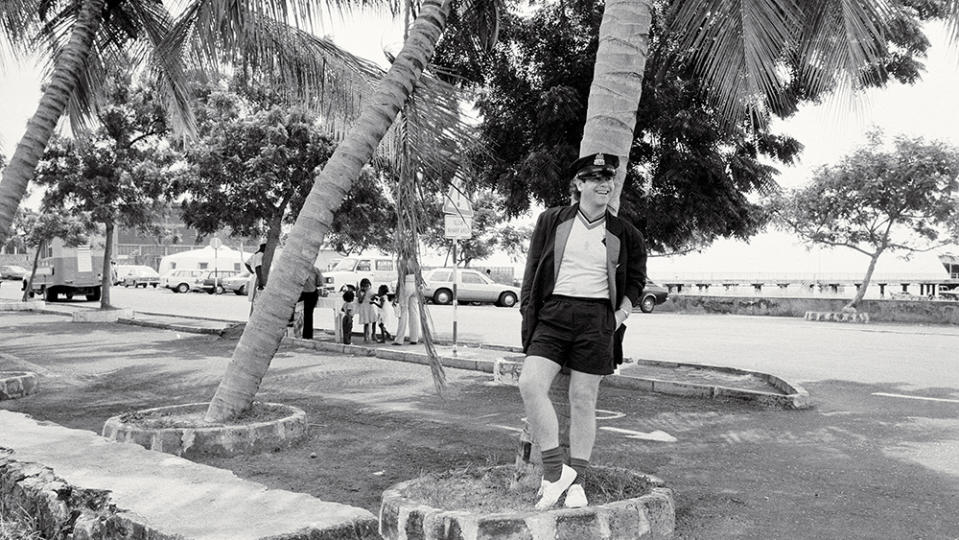
There were guest rooms on-site where artists could stay, and a pool, too. Notoriously, many would use the roof as a diving platform, jumping off the top of the building into the deep end. “The real reason their albums turned out so good was that the studio had a pool,” recalls Danny Sweeney, a charmingly roguish surfing instructor who taught many musicians how to catch a wave before he went on to run a local bar. “It was a working vacation.”
The good times were not to last, as the rockstar playground of Montserrat was destroyed—not by fire and brimstone, but first by drenching rains, then by molten lava. Now, a quarter century after those twin catastrophes, the Caribbean island is making a comeback. This time, there’s no impresario to lure music’s biggest talents to the mountainous Eden, but the country is leaning into its singular place in rock history—as well as its own indigenous rocks and other natural beauty—to draw paradise seekers.
Walk of Life, Dire Straits Brothers in Arms (1985)
Today, Sweeney is rangy and flirtatious as he sits on the veranda of Olveston House. It’s easy, then, as he recounts a party almost 40 years ago, to picture him strutting around a dance floor for an entire evening, grabbing musicians’ wives and girlfriends to twirl until the early hours. He was always game to dance, but that particular night, he says, he never left the floor and was soaked with sweat when the nightclub closed. A few days later, Sweeney recalls, Mark Knopfler, the lead singer and guitarist of Dire Straits, called him into the studio while he played a snippet of a new song he’d written that Sweeney claims was inspired by his fleet-footing. “I used ‘Johnny’ instead of ‘Danny,’ in case you didn’t like being identified,” Knopfler told him. That tune was “Walk of Life.”
“I said to him, ‘Your album with this on it? It is going to sell 10 million copies or more,’ but he said the most he’d ever sold was 5 million,” Sweeney says now. “He promised to buy a new windsurfer if I was right.” He pauses, relishing the punch line to a story that he has clearly told many times before. “I am still waiting.” The album, Brothers in Arms, has sold more than 30 million copies worldwide, putting it comfortably in the top 50 best-selling albums of all time. Asked to comment for this story, Knopfler declined.
Turn It Into Something Good, Earth Wind & Fire Faces (1980)
Bassist Verdine White is a founding member of Earth Wind & Fire. He and his late brother, Maurice, the band’s front man, met George Martin during the filming of 1978’s flop movie adaptation of Sgt. Pepper’s Lonely Hearts Club Band. White tells Robb Report that he heard about the producer’s plans for AIR Montserrat then. “He invited us to come and record any time it was convenient for us, and it was perfect timing,” White says. “We chose to record our double LP Faces there, because it was a departure from what we had been doing. We needed to go back to basics, playing good tracks without trying to be commercial.”
White was smitten with Montserrat from the moment he arrived—mostly the friendliness of the locals. “The workers in the field dropped their tools and started applauding as we passed by,” he recalls. “As the only group of color to record there, we were just honored and happy.” He emphasizes how the relaxed, welcoming vibe of the island was an ideal creative proving ground and how much the people there embraced the visiting musicians. “We didn’t get a chance to jam with the people, but the chef who prepared our meals was also a famous local DJ. He played our records during his time on the air and gave us tremendous shoutouts almost every day. We always listened to his show during mealtimes.”
I’m Still Standing, Elton John Too Low For Zero (1983)
James “Scriber” Daley, a local park ranger, has particularly fond memories of Elton John, who visited the island multiple times. “Lemme tell you, he would come hang out, and one Sunday, news got around he was in the village,” Daley recalls, noting that all the locals came down to say hello. Touched by the warm greeting, John told the bartender to put the entire afternoon’s tab on his check. (For John, Montserrat proved truly life-changing: He married AIR sound engineer Renate Blauel in 1984. They divorced four years later.)
Midge Ure of Ultravox fame loved Montserrat so much he bought a home here, though he’s reportedly called that purchase “the stupidest thing I did in the 1980s, because it was infested with termites.” Sting became smitten with the island, recording solo albums here after the Police split and renting a house for vacations with his wife and kids.
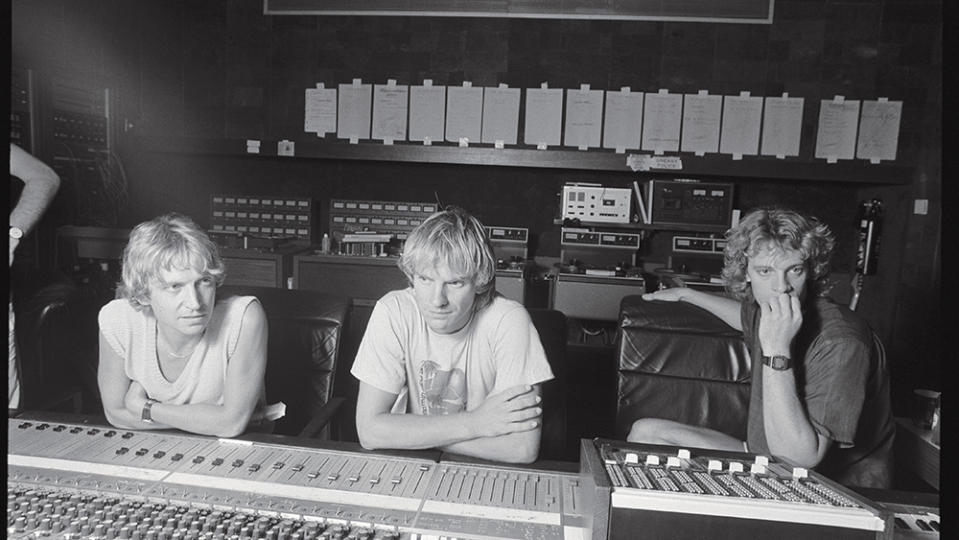
Not every rock star relished their time on Montserrat, though, including an American band, which will remain nameless, remembered by one local. “They couldn’t cope with the fact there were no drugs around,” she sniffs. A different resident claims that Mick Jagger also never seemed happy in Montserrat. “He hated it here, because nobody paid attention to him, so he’d walk back and forth to try and get noticed,” she says. But another disagrees, frowning. “Oh no, it wasn’t Mick. It was Duran Duran—they missed all the screaming girls.”
Looking at what remains of AIR now, though, one finds it hard to imagine those antics. There’s chain-link fencing across the driveway, featuring a KEEP OUT sign, erected by the Martin family. “We regret the need to restrict access… ,” it says, almost apologetically. The site’s a ruin, festooned with wasps’ nests, its windows glassless and what remains of the roofs askew. It was pummeled not once, but twice, by those disasters that struck the country three decades ago.
Calm Before the Storm, Sheena Easton Take My Time (1981)
Hurricane Hugo punched first. The 1989 storm passed right over the country, the first such direct hit in decades. The devastation was widespread. One local estimates that 95 percent of the houses here were left without a roof. As for AIR, that bunker-like building was built to survive. The thick concrete walls, essential for a soundproof studio, withstood the winds well. The problem was power: The on-site backup generator, a fail-safe during the island’s regular brownouts to ensure that no rock star’s riff ever went to waste, was broken. “Poor maintenance,” says one local, grumbling about the lapse.
In the wake of the power loss caused by the storm, both heat and moisture wreaked havoc at AIR. When Martin arrived to inspect the damage a few weeks later, Danny Sweeney recounts, the impresario opened the piano to look at the keys. The ivories were already covered in green mold. There was no money to restore the studio—or rather, no point. As the 1980s ended, record-company budgets were shrinking. With improved technology, corporate studios became obsolete, and the penny-pinchers saw little reason to underwrite a three-month stint in the sun for Paul McCartney, Dire Straits or anyone else. “I asked him if Hugo hadn’t hit, whether it would still be open,” says David Lea. “And George told me, ‘Oh no, never. Digital was taking over.’ ”
Rock and a Hard Place, Rolling Stones Steel Wheels (1989)
Perhaps, though, Martin might have found a way to reboot his enterprise—AIR still operates a site in the UK, after all—had a second disaster not struck just six years later. The locals had long learned in school that the volcano here, Soufrière Hills, which dominated the southwest center of the pear-shaped country, was a dormant relic despite the occasional burping rumble. In 1995, those lessons were proved wrong. Rumblings continued for two years, until a major eruption in summer 1997. Nineteen people were killed, and two-thirds or so of Montserrat’s land—including all of its most fertile farmland, as well as the thriving capital, Plymouth—became uninhabitable, buried beneath ash and lava like a Caribbean Pompeii.
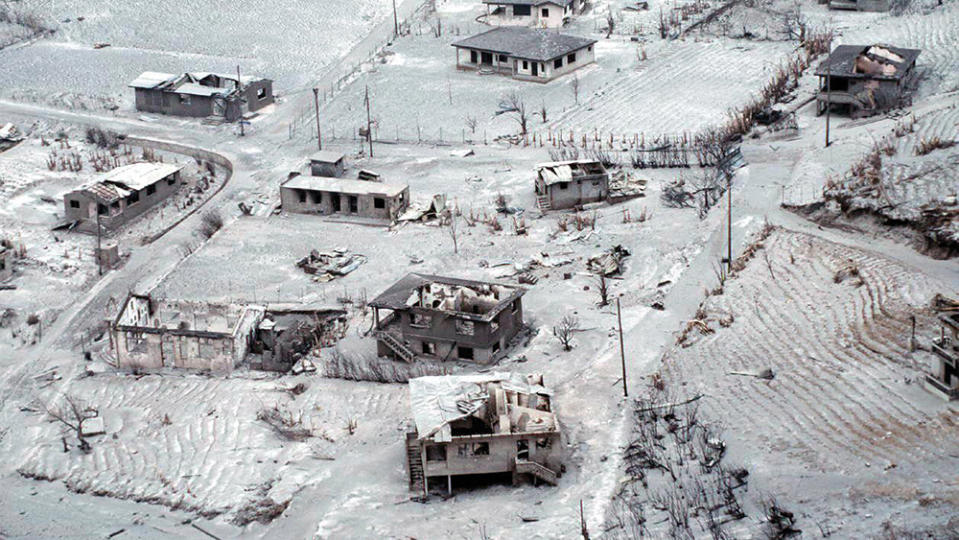
It’s possible now to visit what remains of Plymouth, albeit with a guide, and wander around the rubble-strewn roads. Three-story buildings sit, poking slightly out of the ground, their interiors full of once-molten lava. Entering the exclusion zone here—a no man’s land, a tropical DMZ—one notices the roads instantly become rougher, and the air starts to stink with sulfur. “When the eruption happened, it was so strong you had to hold your nose. It burned,” says guide Cecil Wade, standing in the center of the former downtown. Now the only activity is the dusty thunder of trucks, which crisscross the land carrying sand mined from the volcanic ash—so much better for construction, as it’s salt-free, unlike a beachy supply. It’s commodity as apology, as if the volcano is trying to give back something after wrecking the locals’ lives.
The volcano is still considered active, and its seismic movement is closely tracked via an observation post manned by staff from the University of the West Indies. It’s deemed safe enough, however, for the authorities to open some sections on the northern edge of the exclusion zone to visitors to explore unaccompanied, including the area around AIR Studios, for example, or the once-tony district of Richmond Hill. Most of the homes there are half-hidden in the undergrowth, after 25 years of nature reclaiming the landscape. Occasionally, though, one shows through, gleamingly pristine—take the squat blue box, its window-sills painted egg-yolk yellow nestled amid the ruins. “They can’t go back,” says Scriber Daley of the owners of these sentimental but futile renovations, which still lack electricity and running water. “But psychologically, in their minds? They have it that they might one day. Sometimes people now go and lie down there, sleep and rest themselves for a while. Just to reminisce about the past.”
Living in the Past, Midge Ure The Gift (1985)
It was a ruinous disaster for a place with such a storied history. In the aftermath, Montserrat’s population was offered free passage, and passports, to live in the UK. Three-quarters of locals took one-way flights out. A hardy contingent remained, though. “I wasn’t tempted to leave,” recalls David Lea. “When the last ferry leaves, I’ll be on the one after that.” Instead, he salvaged what he could—one dial from the old Plymouth clocktower, for instance—and created a shrine to that era in memorabilia, ranged among the tables of his bar, the Hilltop Coffee House.
Modern Montserratians may now have British passports, but the first Europeans here were Irish, mostly indentured workers banished to the otherwise uninhabited island from the plantations on nearby St. Kitts after one too many rebellions. Their culture is palpable even now: In places with names such as Cork Hill or Galway, the shamrock on the welcome stamp in every passport and even the national dish—squint a little at a bowl of goat water and it could be Irish stew. St. Patrick’s Day is a national holiday on Montserrat, the only country other than Ireland proper. “We’re Afro-Irish,” adds Kenneth Silcott, a former champion calypso king who now runs the arts council. “At the St. Patrick’s feast, you’ll see some people in full green garb and others in African dress.”
Hot Hot Hot, Arrow Hot Hot Hot (1983)
Those Irish immigrants also brought music, which was a cherished part of the Montserratian life well before Martin and co. arrived. Their love for it commingled with the African traditions of the enslaved people who were shipped to the island to work on the sugar plantations. “Music for us is an integral part of our culture,” says Rose Willock, a longtime host at local radio station ZJB. Music here, she explains, combines Celtic and African traditions—the Oriole String Band, for instance, today plays a repertoire that ranges from soca to chanteys. Look closely at the carnival dancing, too, and you might recognize Irish toe-stepping in its movements.
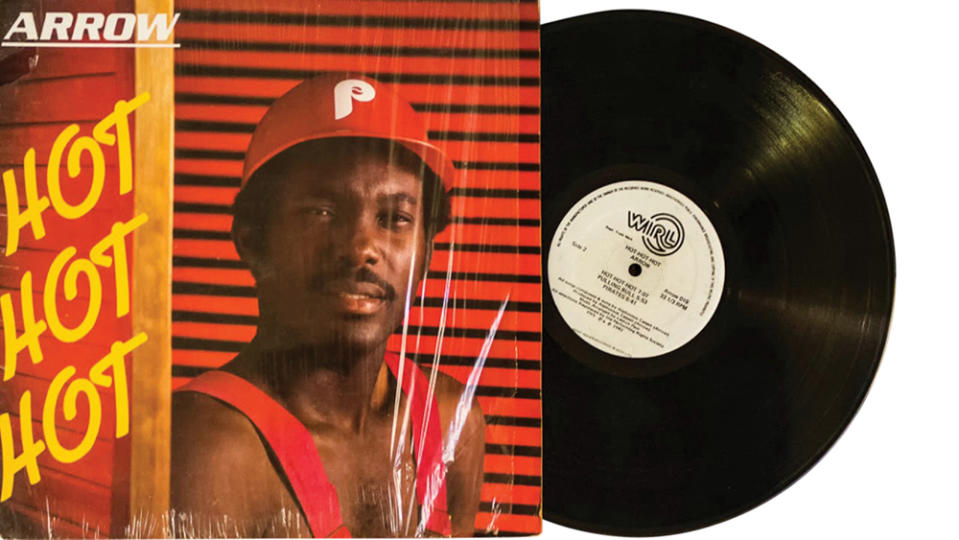
Montserrat’s most famous homegrown musician, though, was Alphonsus Cassell, better known as Arrow. He and his brother wrote the worldwide smash “Hot Hot Hot” on the island, and Arrow carved out a path for a distinctive soca sound that incorporated merengue beats into its rhythmic fusion. Cody Greenwood was a regular visitor to Montserrat as a child and just 5 years old when the eruption happened; she produced the recent documentary Under the Volcano, about the AIR Studios era. “It was important for me to acknowledge local music in it—the soca, too. It’s been embedded in the culture forever, and Arrow is really the local hero down here, even now,” she says of the musician, who died in 2010. “The strong music culture meant when artists would come down, the locals would sing on a lot of the albums, like for Elton John or Dire Straits.”
Boat Drinks, Jimmy Buffett Volcano (1979)
Greenwood hoped that her film would pique viewers’ curiosity about Montserrat and tempt them to visit—she’d even intended to premiere it on the island with the goal of luring some of those rock-star icons to return for a nostalgic look. Pandemic lockdowns precluded any such celebrations. The local government does have concrete plans, though, to draw tourists. They’re centered on Little Bay, close to the northern tip of the island and near the country’s new commercial and political hub.
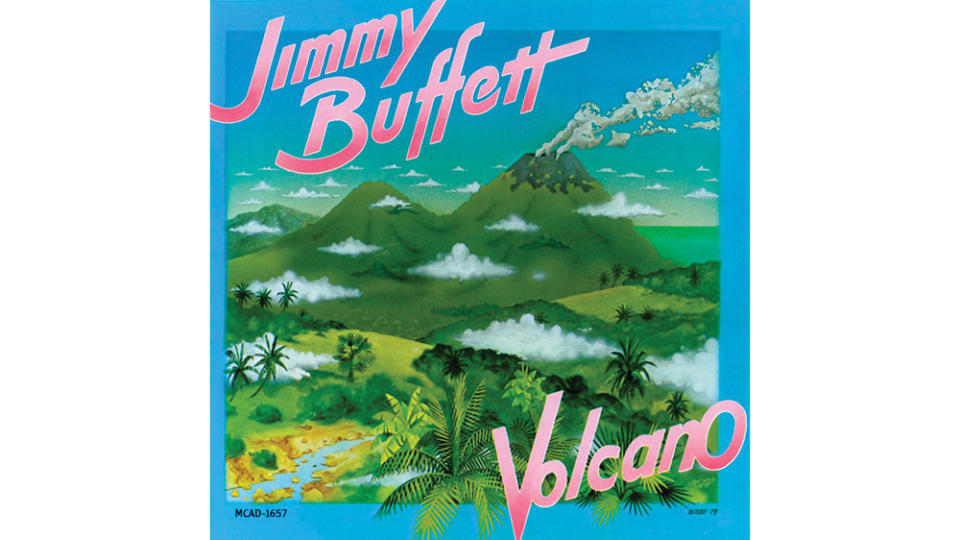
Little Bay became the emergency base for supplies after the eruption, but the waters here are too shallow for much commercial shipping or any superyacht. Dredging to rectify that problem has begun, and there’s a big patch of dusty scrubland on the waterfront ready for construction of a port that can harbor high-end cruise ships and private vessels by bolstering the jetty to 426 feet and the depth of waters from 9 to 26 feet. “Little Bay is one of the most sheltered harbors on the island,” explains Dion Weekes, the project manager. “And we want to have yachts calling there in 18 months.”
Spirits in the Material World, The Police Ghost in the Machine (1981)
Doubtless, many will come to make pilgrimages to AIR and Olveston House, a chance to connect with an overgrown corner of rock history. But there’s more to Montserrat than rubble. Much like neighboring Dominica’s, the countryside here is lush and quilted with trails.
Scriber Daley—he earned his nickname at school, because he was such a good describer—is the ideal guide for exploring. Walking under the forest canopy with him is like accompanying Dr. Doolittle. He holds a thumb to his lips, sucking and tutting simultaneously like a scolding kiss. In response, the tree up ahead starts filling with Montserrat orioles, the national bird found only on the island; they twitter noisily in reply, more and more gathering to answer his calls.
Daley relishes the chance to take folks hiking for hours over Hope Ridge or Katy Hill, looking for birds or the Montserrat orchid. But one animal no one ever sees or hears now is a cricket he calls the spoon-in-glass. “It would go ting-ting-ting, and it was a sign to drop everything and leave the forest, because night could come over very fast,” he recalls. After decades of its silence, though, Daley fears this insect was wiped out in the wake of the eruption. “I have slept over there in the forest to see if I could hear the sound. It was so lovely. I never have.” He remains hopeful, though, and he doesn’t stop trying.
Despite the natural disasters’ upheaval, little about the island’s culture has changed. “My mum always used to say to me, ‘You don’t lock up here—no one will rob you,’ ” says Greenwood. “We had over a million dollars’ worth of camera equipment, and we could never find a key for our villa, but people just said, ‘You don’t have to worry.’ On Montserrat, you don’t have to worry about a thing.”
Best of Robb Report
The Ultimate Miami Spa Guide: 15 Luxurious Places to Treat Yourself
The 7 Most Insanely Luxurious Spas in the World, From Tokyo to Iceland
17 Reasons the Caribbean Should Be at the Top of Your Travel Itinerary
Sign up for Robb Report's Newsletter. For the latest news, follow us on Facebook, Twitter, and Instagram.

